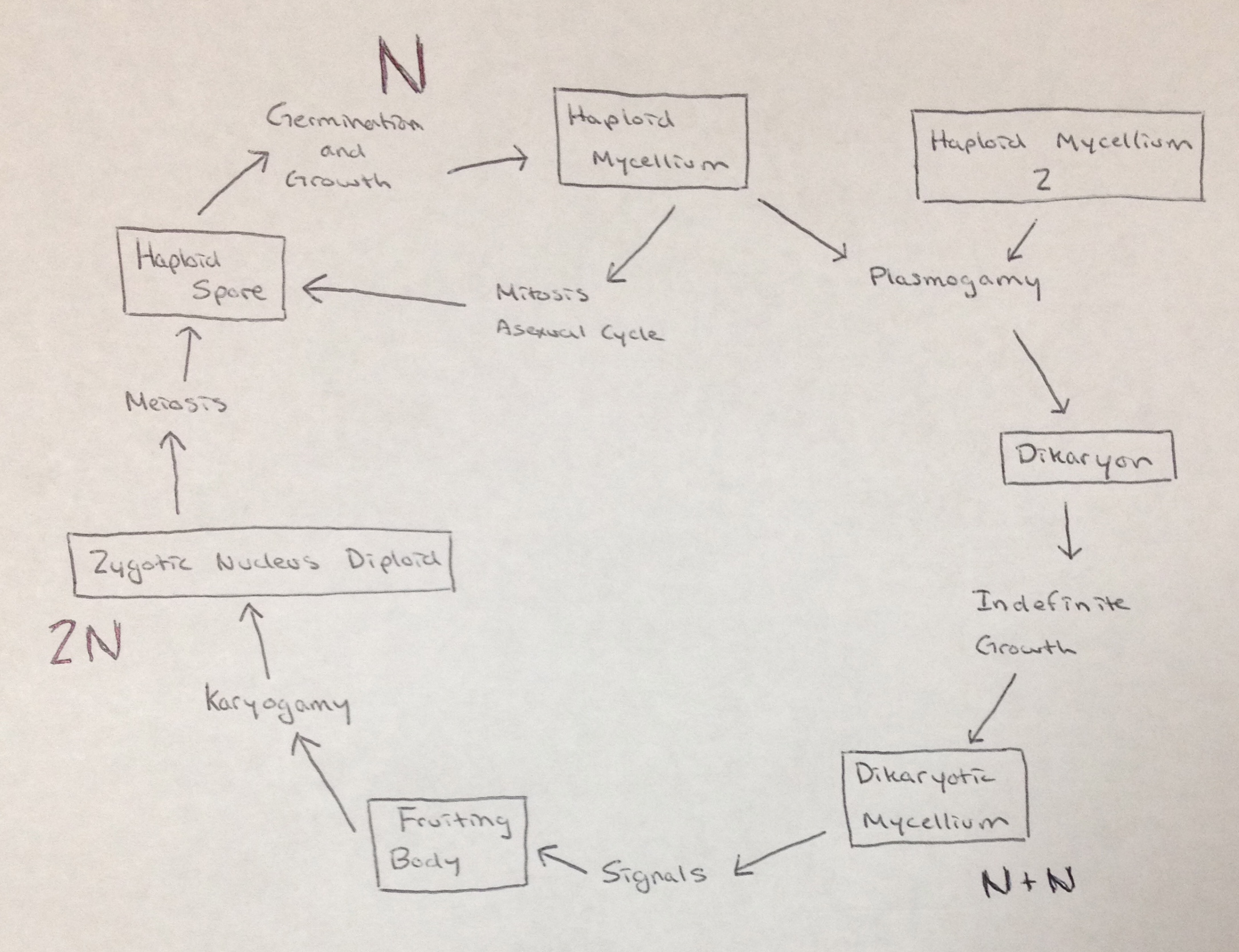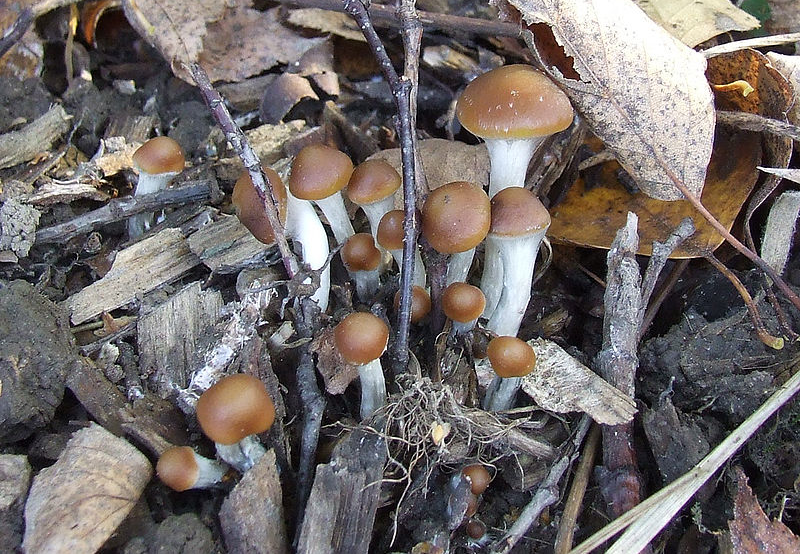Life Cycle

Jacob Akin, April 20, 2013
Psilocybe cyanescens is a typical
fungus that undergoes the traditional reproductive process for
mushrooms. The cycle first begins with 1N, where a haploid spore is
introduced to the proper medium, see
Nutrition for greater detail on this aspect, but once the
spore is germinated the further development of mycelia (singular)
results.
Growth Process
Mycelia is in essence of thread like material,
made up of hyphae, that develops in the substrate or growing medium.
The individual hyphae are crucial, because they are composed of
vesicles at growing locations, referred to as branch regions in the
scientific community. The mycelia continues to develop in response
to the available nutrients. As the mycelia continues
to increase in prominence, plasmogamy occurs resulting in a dikaryon,
now composed of (plural) mycelium. The now N+N (dikaryotic) mycelium
continues to grow in the substrate, and reproduces at an increasing
rate.
Eventually, the mycelium allows for fruiting
bodies to develop, which are the mushrooms that are seen. Therefore,
the mushroom that grows is actually a fruit that developed from the
network of mycelium beneath the surface of the substrate. The
fruiting body undergoes one final transition, referred to as
karyogomy, resulting in the diploid fruiting body that is eventually
harvested or releases its spores into the environment. The spores
that are released into the external environment from the gills of
the fruiting body however are singular (1N) and thus the cycle of
life repeats itself, as long as the environment that the (singular)
mycelia is in can support the nutrient requirements.
Wikimedia Commons, February 21, 2009
If the concept of various generational
transitions is still confusing, please continue reading,
as I will simplify the process, which will hopefully be able to
enhance your understanding of the fungal developmental process. In
essence, as long as there are adequate nutrients to support the
growth of mycelium, fruiting bodies should develop from the mycelium
and continue to release their spores, which in turn will eventually
create more mycelium when plasmogony occurs. It is also important to
note that the singular form of hyphae's cellular walls are composed
of chitin, instead of cellulose as occurs in plants. Although this
is similar to the process that occurs in plans, it is important to
note that the organelles and structures of fungi differentiate
greatly from that of plants. Lastly, the method of nutrient uptake
that fungi have adopted is similar to that of animals, in particular
the aspect that fungi store their nutrients in the form of glycogen,
which differs greatly from plants, as plants store their food in the
form of starch.
Venture to the
Interactions page to see how P. cyanescens
interacts with other organisms in a given environment.

